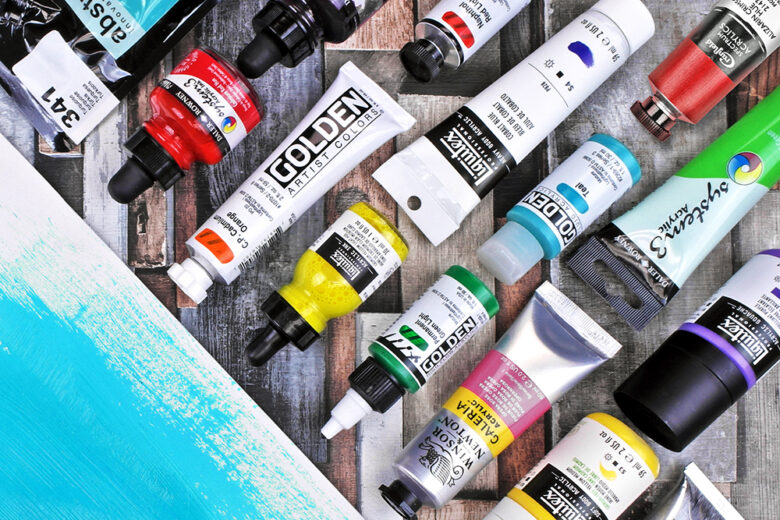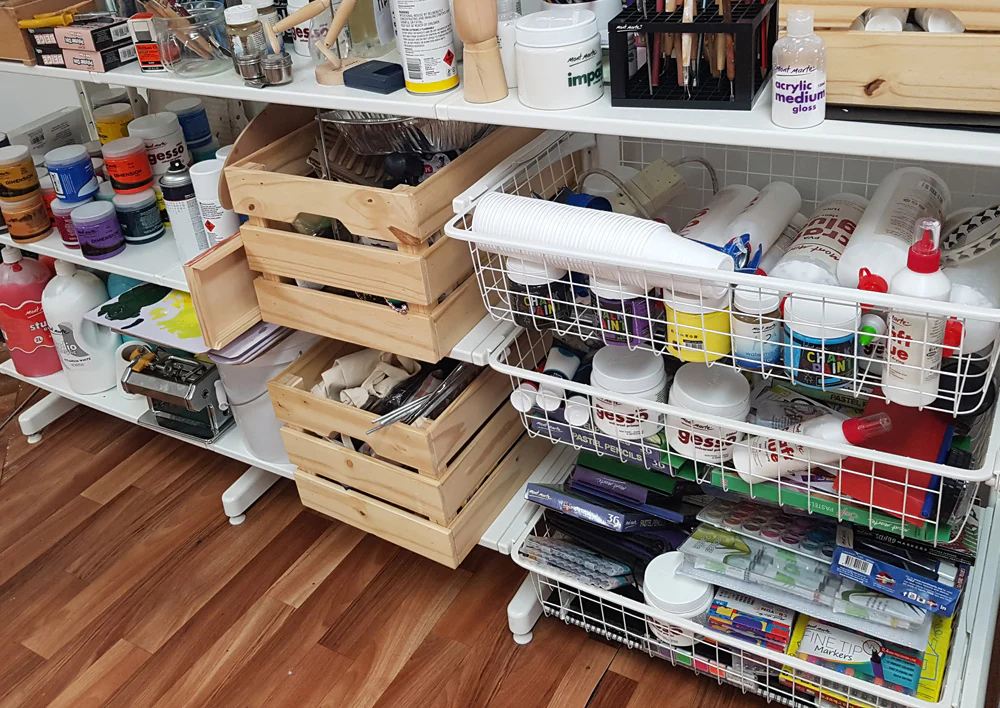Understanding the shelf life of acrylic paints is crucial for artists and hobbyists alike. Acrylic paints, over time, may lose their vibrancy and consistency if not stored correctly. It is essential to recognize the shelf life to ensure the paints’ optimal performance and preserve the quality of your artwork. The longevity of acrylic tints is influenced by factors such as the paint’s composition, the quality of ingredients, exposure to air, and storage conditions. This guide aims to unravel these complex elements and provide a clear understanding of how long your acrylic tints can maintain their usability, aiding you in managing your art supplies more efficiently.
Contents
What Are Acrylic Paints?
Acrylic paints are a favored medium among artists due to their fast drying times and versatility. These paints consist of pigment particles dispersed in an acrylic polymer emulsion. They are widely used for their ability to adhere to various surfaces, including canvas, paper, wood, and metal. Unlike oil-based tints, acrylics are water-based, meaning they can be diluted with water but become water-resistant when dry. This unique characteristic of acrylic tints makes them highly desirable for both beginners and professional artists.

Source: artsupplies.co.uk
Understanding Shelf Life
Shelf life for acrylic paints is the period during which they can be stored before starting to deteriorate. The shelf life is impacted by how the tints are formulated and the conditions under which they are kept. Manufacturers often provide an estimated shelf life, which you can check out at Green Stuff World, but this can be affected by temperature fluctuations, humidity levels, and the frequency with which the paints are opened and used. Understanding these variables is key to maintaining the longevity of your acrylic tints.
The Role of Packaging
Packaging plays a pivotal role in preserving the life of acrylic paints. Quality packaging, particularly airtight containers, is crucial as it prevents the tints from drying and minimizes the exposure to air. Air exposure can lead to the evaporation of water and other volatile components in the paint, which causes thickening and clumping. Proper packaging also guards against microbial growth that can spoil the paint. By ensuring the paints are sealed correctly after each use, you can extend their usable life significantly.
Acrylic Paint Storage Tips
Storing acrylic tints effectively is vital for preserving their shelf life. To prevent them from drying out, always close the paint tubes or containers tightly after use. Store the paints in a cool, dry place away from direct sunlight, as UV rays and heat can degrade the pigments and binder over time. It’s also a good practice to keep them away from extreme cold, which can cause the tint to separate and become unusable. If you use jars or palettes for mixing, ensure they are sealed if you plan to use the paint again. Storing tubes and bottles vertically with the cap facing up can prevent the tint from drying in the opening, making it easier to open the next time.

Source: montmarte.com
Signs of Expired Acrylic Paints
Expired acrylic tints show clear signs of deterioration. They might have a strong, unpleasant smell, indicating bacterial growth. The texture can change, becoming lumpy, rubbery, or stringy, which makes them difficult to apply smoothly. Separation of components is also a common issue, where the pigment settles to the bottom, and a clear or colored liquid forms on top. Changes in color can occur, with the paint either becoming faded or darker if the binder has started to yellow. Checking your tints regularly for these signs can help you determine if they are still good to use.
Factors That Can Prolong Shelf Life
There are methods to extend the life of your acrylic paints. One key factor is the storage temperature. Ideally, keep your paints in an environment that’s consistently cool and dry. Avoid fluctuations that can cause the tints to expand and contract, leading to separation and spoilage. Humidity control is equally important; too much moisture in the air can introduce water into the paint, diluting it and promoting mold growth. Using additives or extenders can rejuvenate the paint if it starts to dry out, but this is often a temporary solution. Regularly using and gently shaking the tints can also keep them well mixed and extend shelf life.
How Long Do Acrylic Paints Typically Last?
The average shelf life of acrylic paints varies depending on their composition and storage conditions. Generally, high-quality tints stored under ideal conditions can last for several years, sometimes up to 10-15 years without significant quality loss. However, if not stored properly, their life span may be considerably shorter, sometimes as little as 5 years. Artists should note that different pigments and brands can have varying longevity, and it is wise to monitor your paints’ performance over time.

Source: artincontext.org
Reviving Old Acrylic Tints
Partially dried acrylic paints used for acrylic paintings on canvas can sometimes be salvaged. To restore these paints, you can mix in a specialized acrylic medium, which can help rehydrate the paint and improve its consistency for canvas artwork. However, it’s important to note that this might not work if the tint has fully cured or has mold growth. Small amounts of warm water or acrylic flow improver can also aid in reviving the paints, but it’s a delicate process. Reviving old tints for use in acrylic paintings on canvas is not always successful, and sometimes it’s better to replace them than to compromise the quality of your artwork.
Disposing of Expired Acrylic Paints
When acrylic paints can no longer be used, it’s important to dispose of them properly. Do not pour them down the drain, as they can contain harmful chemicals that damage waterways. Instead, let them dry out completely and discard them with your regular trash. Some regions have hazardous waste programs that accept old tints. If large amounts are involved, such as from a studio clear-out, contacting a professional waste disposal service that handles chemicals is the best course of action.
Conclusion
The longevity of acrylic paints is dependent on quality, storage, and care. Properly stored, they can serve artists for years, but negligence can shorten their lifespan. By understanding the factors that affect the longevity of acrylic tints and implementing good storage practices, you can ensure that your paints remain in the best possible condition for as long as possible. Remember to regularly check your tints for signs of spoilage, and don’t be afraid to discard those that are past their prime to make room for fresh supplies that will keep your artwork vibrant and enduring.
